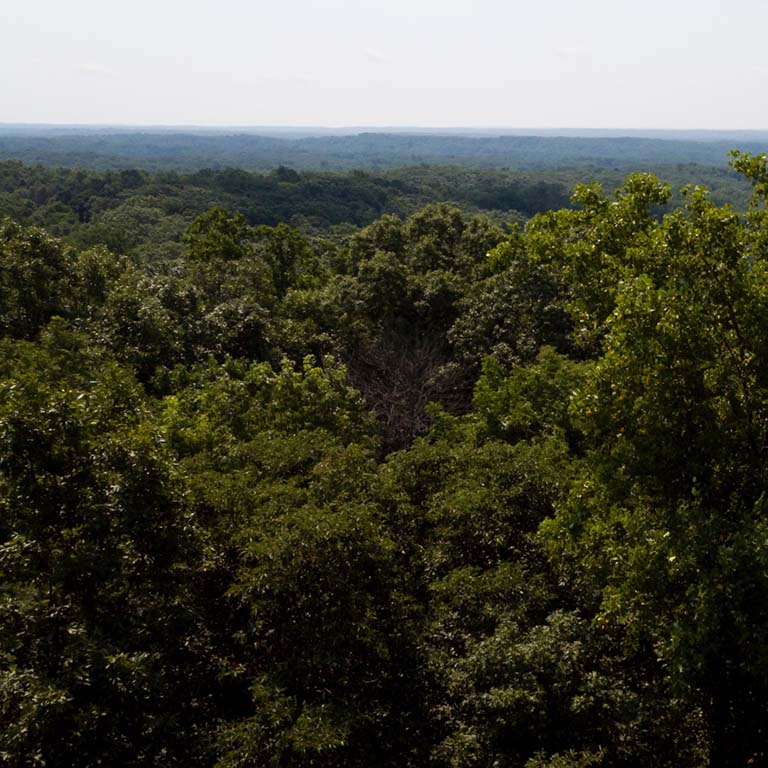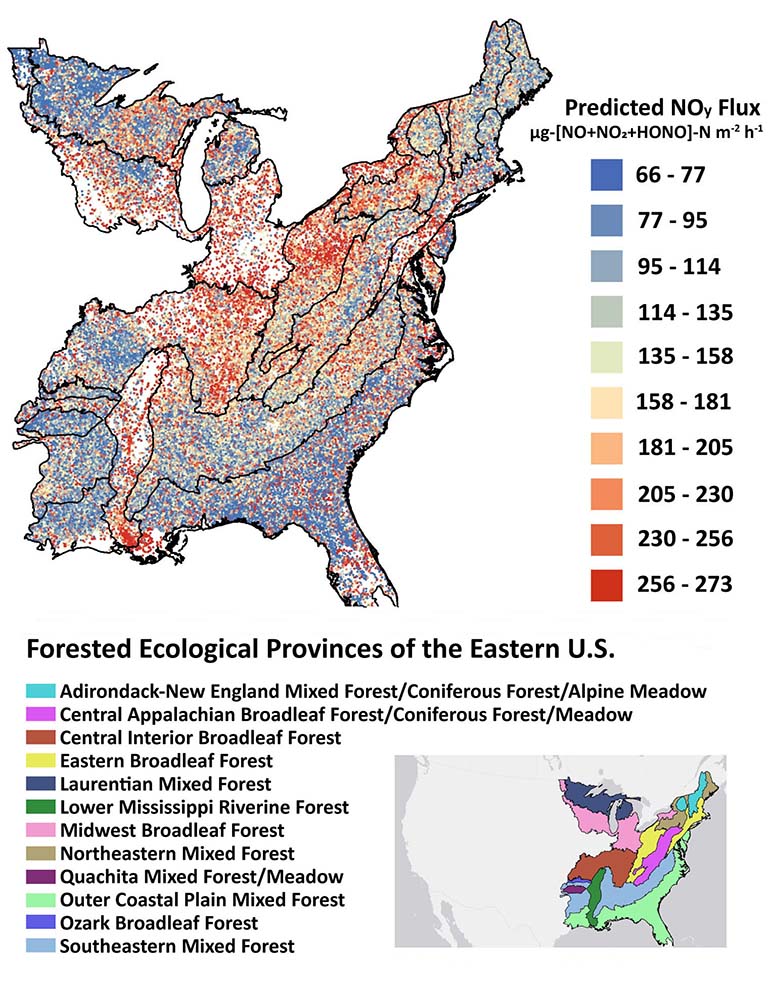[View original story from source]
Tree changes in the midwest and eastern U.S. will lead to more atmospheric chemicals that cause air pollution and respiratory illness.
A study from Indiana University has found that trees influence whether soil can remove or emit gases that cause smog, acid rain and respiratory problems.
The chemicals, collectively known as reactive nitrogen oxides, are produced by soil bacteria that feed on naturally occurring ammonium -- as well as nitrogen fertilizers from industrial and agricultural sources that enter soil from the atmosphere.
The study was reported Jan. 18 in the Proceedings of the National Academy of Sciences.
"This study has profound implications for future air quality," said Jonathan Raff, associate professor in the School of Public and Environmental Affairs at IU Bloomington. "Human activities, such as fire suppression, fertilizer use and climate change, are causing forest populations to shift from stands of trees whose soils do not emit these gases to those that do.
"Reactive nitrogen oxide gases from fossil fuel burning have been well curbed over the past several decades due to effective policy," he added. "However, our study shows that, as forests change, we can expect higher background levels of nitrogen oxides, which could make it more difficult for some regions to achieve the National Ambient Air Quality Standards for nitrogen oxides and ozone."
Raff's laboratory is one of the few university-based facilities in the country able to accurately measure reactive nitrogen oxides emitted from soil. The gases include nitric oxide, nitrogen dioxide and nitrous acid.



 The College of Arts
The College of Arts